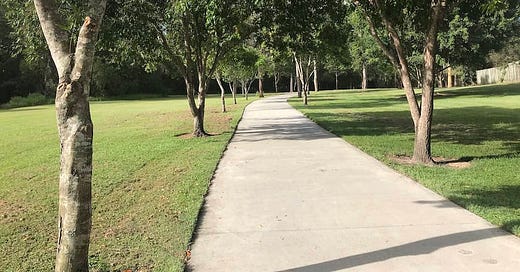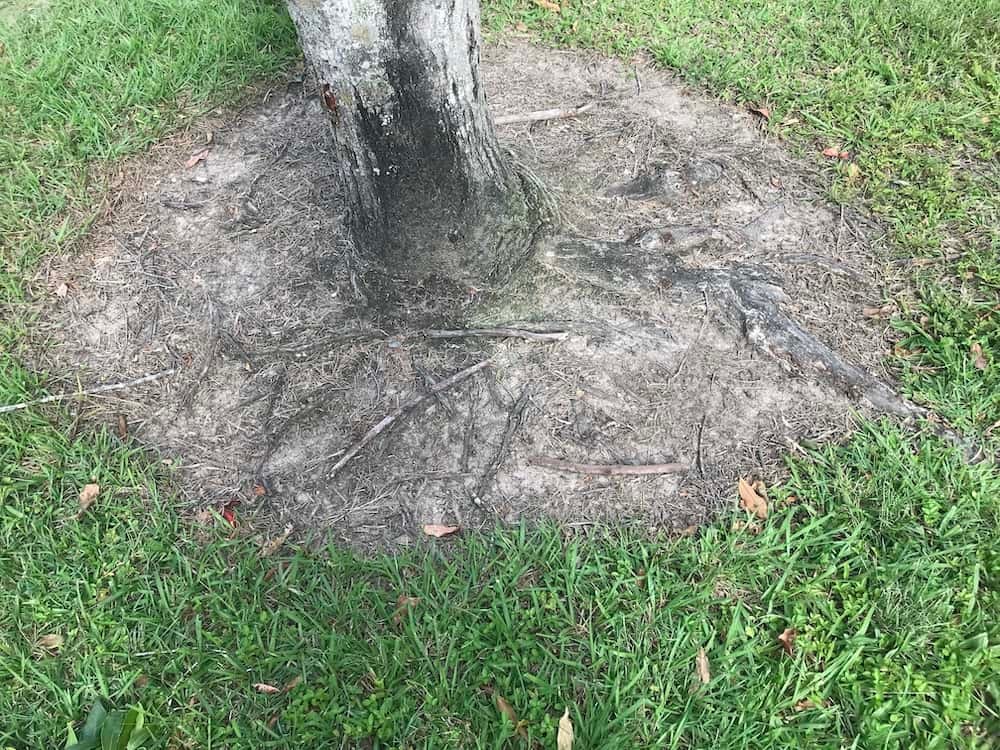Welcome 2023 – Will it be the year for biodiversity?
I started 2023 feeling more confident than I have for some time.
The COP15 - Biodiversity COP - and recent movements from the new Australian government was encouraging. Maybe it wasn't everything that everybody wanted but it was a significant change.
And biodiversity is firmly on the agenda both globally and locally.
Locally, we're making progress with native verges and the Banyo Verge Garden Pilot Project and there is a new organisation Backyards for Biodiversity SEQ that is advocating for people to plant native "gardens for wildlife".
On Linkedin, I have conversations with Glenn Christie in Adelaide about the little plants that nurture all the little critters that build biodiversity in the soil and nurture our trees, like this and this and this. Building biodiversity from the ground up.
Before setting off on my first walk of the year, I paused to watch the blue and brown fairy wrens, the little brown honeyeaters, and the willie wagtails take turns at the birdbaths, then join the noisy friarbirds in their favourite tree, the acacia fimbriata. Rainbow lorikeets were visiting the grevillea on the other side of the driveway. The blue-banded bees were buzzing in the morning sun. Multiple generations of blue tongue lizards live in this suburban garden. It all felt full of life and sound and movement.
They tell us that urban greenspace, including every one of our gardens and our verge gardens, has a big part to play in protecting and increasing biodiversity and providing habitat for many species. And this is my small contribution.
Then I walked through our local park and almost cried.
The shared path through my local park. Houses to the right, creek to the left.
We are told urban greenspace is beneficial to our own physical and mental health and it may even be the key to survival for many species. Environmental activists and urban planners cheerfully share articles like this and this.
But greenspace and biodiversity mean different things to different people.
The park above would be classed as good quality greenspace by most residents and the recent mowing and neat edges a sign that the council was doing a good job caring for their suburb.
The creek on the left may have considerable biodiversity, albeit somewhat weedy. The gardens on the right are a mixture.
But the park itself? Two layers - trees and a mix of grass and weeds mowed short. There is no wildlife to be seen there. A kookaburra could be heard from somewhere in the trees near the creek.
Occasionally, I have seen some ducks here, and noisy miners. This is ideal territory for noisy miners - check this video Noisy miners: when good birds go bad to see how that affects smaller birds.
Small birds need more layers. Understory plants, some dense and spiky to offer shelter, insects for food, and habitat for breeding.
I often think about this question of what makes a good park when walking along this path but today I noticed something else. The extreme neatness of the landscape was matched by neat circles under the trees.
Neat bare circles under all of the trees.
I looked a bit closer...
Every tree had a bare circle like this. What has it done to the life in that soil?
This isn't done with a strimmer, which would have been bad enough for the trunk and the roots. This is done with herbicide, almost certainly glyphosate.
Around every single tree.
I am sure that there are people who work for the council who know a lot about biodiversity and tree health and this post isn't a criticism of them. They are not the ones who make the decisions and set the budgets.
What we have here is a reflection of how our mainstream culture expects parks to look. This is what people vote for. It's green, safe, and neat.
For many of my fellow residents this park is wonderful, a place to connect with nature. If you asked them if they valued biodiversity and the environment, they'd say of course, and point to the park as an example of how nature and biodiversity is doing just fine.
And there is our problem.
If we want people to act and vote to build and protect high levels of biodiversity, they have to have some sort of benchmark to realise how barren the park above is. And notice how few species of small birds are there. And how few lizards. And how few bugs and butterflies and native bees.
My garden is my benchmark. While it could always be better, it already has a much higher level of diverse, predominantly-native plants, and wildlife that finds food, water, shelter, and places to breed. It is where I go to connect with nature.
So what about 2023 as the year for Biodiversity?
Some time ago I realised that nurturing our verges has to be done at a hyper-local level where there is a personal interest and commitment to stewardship of the land. I wrote about it here: Council versus Resident-planted Verge Gardens
Perhaps the same applies to our local parks.
There are some excellent projects like the daylighting of Norman Creek but these are showcase, big-budget, professional projects. They won't reach the level of our local parks.
We can't just outsource care of our parks to Councils (or Council contractors) while also demanding that our rates stay low and the parks stay this version of neat. Local people, local organisations, have to be involved in the oversight even if not the actual work.
Catchment groups, volunteers working with sections within councils, are doing some of this work but they struggle for volunteers and funds, and are ignored by the majority of community members. Their work is out of sight and out of mind.
Whether we like it or not, it's a political matter.
Only when the majority of voters demand rich biodiverse habitat in their parks instead of the current grass and struggling trees, will the Council policies, practices and budgets change.
This is the part that verge gardens play. These public gardens in our local streets are the places for building awareness and appreciationof the rich diversity of nature. They are the places where people of all ages learn to recognise and understand our local flora and fauna right under their noses as part of everyday life.
Then many more residents may come to recognise the need to change their own gardening practices, and advocate or vote for more biodiversity.
We can all start by doing our bit in our street, or get involved with a local group, or a project like the Banyo pilot project. For people who live in townhouse complexes and apartments, start with your Body Corporate.
For ideas on how to get the most out of verge gardening and avoid the pitfalls, check out our free course: Verge Garden Basics - Understanding the Space.






